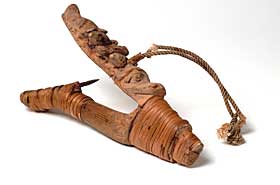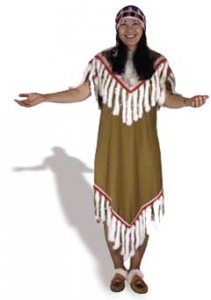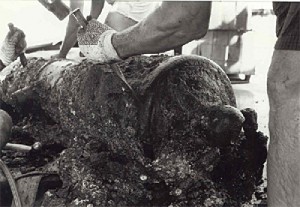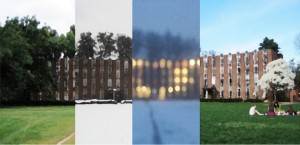When I think of Vassar I think of Noyes. I’ve lived here for the past three years, been a part of the Noyes House Team and have trudged through the mud pit of Noyes circle too many times to count. But what I love best is how beautiful Noyes looks in every season, and this view in particular, which greets me every time I come back home with a giant semi-circular hug. I gave the image this artsy filter because Noyes was a great source of inspiration for me last year during my drawing class, and I’ve spent countless hours hauled up in the basement or lying out on the grass trying to capture in my sketchbook in what I love best about this building.
Category Archives: Uncategorized
Remediating Vassar’s Thompson Memorial Library
The idea behind remediating an image that represents Vassar was to learn basic aspects of photoshop while also applying some concepts of remediation from our class discussion. I have chosen to take an image of the Thompson Memorial Library in the winter time and overlay some images of Vassar students (some of my friends). Behind the library you can see Matthew Vassar looming above in the clouds looking over his creation. The image is my commentary on Vassar student life: students enjoying themselves, getting ready for the spring by dressing like it’s 80 degrees out when it’s really in the 50’s, while also constantly being reminded of the massive amounts of work awaiting them in the library. I added Matthew Vassar, the ominous being we speak so fondly of as Vassar students, as a tribute to all the glory that is Vassar!
Looking Both Ways
Looking Both Ways is an online, interactive exhibit about the Alutiiq People of Southern Alaska, created by the Smithsonian Arctic Studies Center, the Alutiiq Museum and Archaeological Repository and the Alaska Native Heritage Center. The names of these three institutions are displayed largely on the homepage, indicating the collaborative nature of the project.
The exhibit provides a brief introduction to the region and people and map, which you can click on to learn about each village. Each village has about five photographs from different time periods with descriptions that name specific individuals and locations. The exhibit also has a section entitled “Object Categories,” which is comprised of different pages, such as “Our Ancestors,” or “Our Beliefs,” that use archaeological artifacts to tell the story of their way of life and show their evolution from the time of their ancestors through the present. These materials are, however, completely removed from their context, photographe d against a white background, and the descriptions rarely tell you from which site they were found, which village they belonged to, what they meant to their owners or how they were found. Furthermore, images under the “Our Way of Living” section are given no dates, and are photographed as if primitive tools, no longer in use, but they sill allow the viewer to associate them with contemporary Alutiiq life. (see right)
d against a white background, and the descriptions rarely tell you from which site they were found, which village they belonged to, what they meant to their owners or how they were found. Furthermore, images under the “Our Way of Living” section are given no dates, and are photographed as if primitive tools, no longer in use, but they sill allow the viewer to associate them with contemporary Alutiiq life. (see right)
I think the main idea of the site is to attempt tell the story of the Alutiiq people from their perspective, and teach the public about their heritage and identity. However, the exhibition focuses primarily based on the incontrovertible evidence of archaeological material to build their story, rather than through the multiple perspectives of oral histories, and in doing so loses any sense of indigenous authorship, despite its alleged collaboration. Whether the individual tribes where a part of the process, remains unclear.
While there are a lot of good ideas in this site, and it is very engaging, in some areas I believe is misuses images, as Perry  warns us in her article. Some of the pictures are so obviously staged that they seem a bit phony, more like Halloween costume advertisements than images of real contemporary people, as they are completely removed from any sort of context (see left). Images such as these perpetuate stereotypes, and do not enable the viewer to create this new, factual-based conception of modern and historical indigenous life that the site aims to depict.
warns us in her article. Some of the pictures are so obviously staged that they seem a bit phony, more like Halloween costume advertisements than images of real contemporary people, as they are completely removed from any sort of context (see left). Images such as these perpetuate stereotypes, and do not enable the viewer to create this new, factual-based conception of modern and historical indigenous life that the site aims to depict.
Review: The British Sloop Industry Online Exhibition
 I looked at the the British Sloop Industry Exhibit from the Underwater Archaeology Museum. The authors, Chuck Meide (Director, Lighthouse Archaeological Maritime Program) and Sam Turner (Director of Archaeology, LAMP) identify themselves in the introduction and provide a list of acknowledgments on the credits page (which is, perhaps significantly, a separate page.) The webmaster, T. Kurt Knoerl, is listed at the bottom of the page. In the pictures that follow, none of the people are identified by name (attention is paid to the artifact or process being depicted), nor are the photographers identified. Self-erasure from the record is not the most reflexive method, even if a crew list is provided in the credits.
I looked at the the British Sloop Industry Exhibit from the Underwater Archaeology Museum. The authors, Chuck Meide (Director, Lighthouse Archaeological Maritime Program) and Sam Turner (Director of Archaeology, LAMP) identify themselves in the introduction and provide a list of acknowledgments on the credits page (which is, perhaps significantly, a separate page.) The webmaster, T. Kurt Knoerl, is listed at the bottom of the page. In the pictures that follow, none of the people are identified by name (attention is paid to the artifact or process being depicted), nor are the photographers identified. Self-erasure from the record is not the most reflexive method, even if a crew list is provided in the credits.
The introduction provides a historical context concerning Industry’s activities before it embedded itself in a sandbar in St. Augustine’s Harbor in 1764 (St. Augustine being, unfortunately, the sloop’s final destination), and the ship’s subsequent discovery by Southern Oceans Archaeological Research, Inc. in 1997. The historical background gives a strong narrative of “discovering” and “colonization”, and mention of indigenous settlements is peripheral. This surprised me, as one panicky primary source reported that the beached ship (heavy with artillery and weapons) had been ransacked by Timucuan Indians, such that locals were now fearing all-out warfare. Certainly this is significant! “Today there are no known Native Americans who call themselves Timucuan”, but there must be ways to delve back into the record (archaeological or historical) to integrate that part of the story.
The methodology section provides an interesting account of how looting changes the archaeological process (but in an oddly disaffected way) and includes original surveys, but the jargon is not always explained. The findings section does not contain a full catalogue (a link to a dissertation on Industry provides a larger report), but each item is accompanied by a description, pictures, and historical context, making it the easiest to understand. However, this setup exactly mirrors what one might encounter in a museum, so I am not entirely sure what the online experience “adds” (other than helpful links to said dissertation and LAMP’s website, which are indeed helpful to have as immediate resources.)
SOAR worked to engage the general public through articles, high school internships (providing students with generalized training in nautical studies, museum practice, and public interpretation as well), television segments, and public talks. A section titled “Conservation” shows schoolchildren around a cannon submerged in a tank of water, speaking to the conservation of artifacts as well as public interest.
Archaeology and Technology at Vassar
The above video is an excerpt from a short film made by Vassar students about the use of HP Tablet PCs in field-based classes. The full film can be found here.
Professor Johnson talks about using the tablets to prevent the degradation of data- critical and post-processual archaeology place much emphasis on how the archaeologist influences conclusions and interpretations of field data, but Johnson makes a good point in reminding us that the archaeologists’ first influence on the creation of knowledge happens in the field, during the copying out of data. Field methods have as much room for improvement as methods of thought and methods of collaboration or consultation.
Mp3 Test
Caitlin’s Digital Narrative
The Decolonizing Diet Project
In preparation for the theme of the week, Decolonizing Archaeology, I want to share the following blog: http://decolonizingdietproject.blogspot.com/. The project is sponsored by the Northern Michigan University Center for Native American Studies and is a yearlong commitment to eating only indigenous foods. Please take a look at the blog and the multiple other resources to examine what decolonizing diet and health mean for the individuals and communities involved in this effort.
Voicethread Test
Hello world!
Welcome to Vassar Blogs. This is your first post. Edit or delete it, then start blogging!


